Matador Network's Blog, page 693
March 3, 2021
The best Airbnbs in Amsterdam
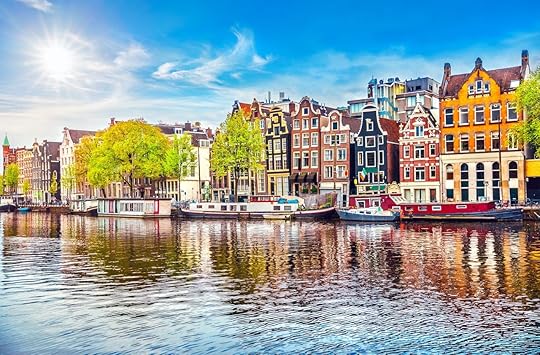
We hope you love the spaces and stays we recommend! Just so you know, Matador may collect a small commission from the links on this page if you decide to book a stay, and listed prices are accurate as of the time of publication.
ONE OF THE PREMIER DESTINATIONS in Europe is the Dutch capital, Amsterdam. Home to brilliant, centuries-old architecture, canals cutting through the medieval center, and world-class art and history museums, Amsterdam is also among the world’s most walkable (and bike-able) cities.
These Airbnbs put you right in the middle of the action, located in the tops of buildings with terraces overlooking the old city, or on houseboats down in the canals.
Private studio apartment in city center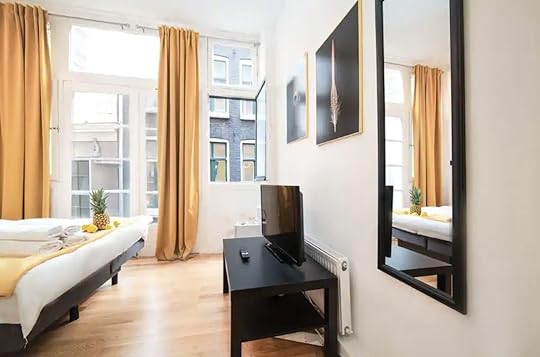
Photo: Airbnb
Just around the corner from Rembrandt Square in central Amsterdam, this sun-filled rental is located near Central Station and much of Amsterdam’s core. It’s a short walk to the flower market, the popular shopping street Kalverstraat, and the Royal Palace of Amsterdam. Gaze at an old-style Amsterdam alley from your bedroom window and if you need a break from the action in the city center, it’s a quick walk or bike to Amsterdam West.
Price: $64 per night
Quirky apartment on houseboat with free bikesA quirk of Amsterdam, a lot of its Airbnb lodgings are houseboats on the canals. This one’s particularly pretty. It’s close to the airport, about 25 minutes away from Amsterdam’s city center — but they provide free bikes to their guests. It’s perfect for a couple or two people who don’t mind sleeping close to each other as the water gently rocks through the night. The boat is solar-powered so on top of your bike commute around the city center, you’re looking at a highly sustainable stay.
Price: $144 per night
Luxurious suite with canal view in heart of city
Photo: Airbnb
This guesthouse suite, located along the UNESCO World Heritage Herengracht Canal, was built in 1637. It’s designed for relaxing window-side with a beverage of choice while watching the canal and the city it traverses flow by down below — a unique take on a city known for action. Of course, the city center and its museums, cafes, and pubs are right there as well, so don’t get too settled in.
Price: $227 per night
Private room near old Heineken brewery, marketsA common theme among Amsterdam Airbnbs is walkability. This spot in the De Pijp neighborhood is as walkable as they come — right by the old Heineken brewery, the Albert Cuyp Market, and the Rijksmuseum. Its obvious highlight is the outdoor terrace, coupled by the fact that the host allows up to four guests and at the current rate, each will spend more going to dinner in the city center than they will on a night’s stay. The unit is set up for remote work, with a dedicated workspace, and is only a five-minute stroll from the heart of Amsterdam and its best cafes, if a change of scenery is in order.
Price: $76 per night
Luxury penthouse on Keizersgracht Canal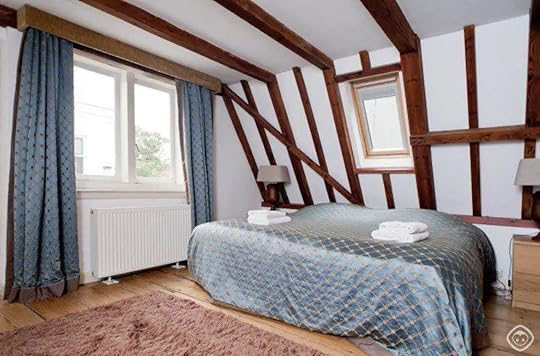
Photo: Airbnb
This penthouse is right in the center of Amsterdam along the Keizersgracht Canal and near Rembrandt Square. You’ll access via a private elevator, and enjoy a private canal view from the massive living quarters — this apartment sleeps 4 with lots of room to spare for activities, including running up and down the staircase to the even better view on the apartment’s second floor. Its price is reflective of its Euro-modern style — though the style points score quite a bit higher in the end.
Price: $385 per night
Centrum penthouse with massive terraceThis rooftop apartment in the dead center of Amsterdam overlooks Waterlooplein, the site of a daily flea market. There’s a broad terrace with an outside fireplace and shower. It’s within walking distance of basically everything you’d want to see in the city center, from museums to cafes to pubs and street spectacles on the square. Not that you’ll necessarily need it, but there is a fireplace in the unit, providing a good excuse to dedicate that all-season sweater you bought specifically for Amsterdam for outside — the-apartment excursions only.
Price: $356 per night
City center apartment combo perfect for large families or groupsThis loft, in a building dating back to the 17th century, is directly above a cafe in Amsterdam’s heart. It’s around $879 per night but that can be split among up to seven guests — so bring the family or your full friend crew. The combo has two kitchens and four toilets, and the hosts make a note of being open to accommodate special requirements. Birthday trip, small-size family reunion, or coworkation — this is the best spot in the city for all three.
Price: $879 per night
High-end houseboat on Prinsengracht JordaanThis 75-foot-long houseboat is on the Prinsengracht Canal right by the Noordermarkt in the Jordaan district. It used to be a cargo ship but has been renovated into a home with a lounge and central heating. It’s got the feel of a tour boat, with deck windows and skylights, and has a terrace perfect for sipping a cold beer or a hete koffie, before disembarking to walk the streets of the city center. The boat sleeps up to three people in two bedrooms.
Price: $362 per night
Classy room in 17th century canal house
Photo: Airbnb
This upscale, double-bed room will likely be the oldest building in which you’ve stayed — circa 1608 — but is done up with modern European style including exposed brick walls, an open floor plan, and expansive windows looking out over the canal below. The unit features a large collection of books including some local guide material, an encouraging trip planning feature as most of the places you’ll want to eat at and tour are within walking distance. For the price, you won’t find a better deal in the city center.
Price: $70 per night
Converted houseboat in city centerDocked in Jordaan, a historic part of Amsterdam, this ship-turned-houseboat is appointed with a fire pit, kitchen, and skylights that let in a lot of sun. Because it’s near the central station, everything in the city is accessible. Staying in a ship is the best way to get both the big city cultural excursion without sacrificing cruise vibes, so your beach-going travel partner really has no excuse to not join you for at least a couple of nights. Up to four guests can sleep across the three bedrooms.
Price: $302 per night
Garden loft in former monasteryThis loft in the De Pijp neighborhood is part of a former monastery, about a 10-minute walk from the Van Gogh Museum and the Rijksmuseum. It accommodates four adults and opens into an expansive garden, perfect for kids or a few minutes of solitude if traveling in a group. Dinner and drinks are equally as close as daytime attractions, as is a stroll along the canals or a bike ride through one of the central squares.
Price: $241 per night 
A version of this article was previously published on September 28, 2014, and was updated on March 3, 2021, with more information.
More like thisWhere to Stay9 dreamiest Airbnbs in the south of FranceThe post The 11 best Airbnbs in Amsterdam appeared first on Matador Network.

Qantas offering ‘mystery flights’
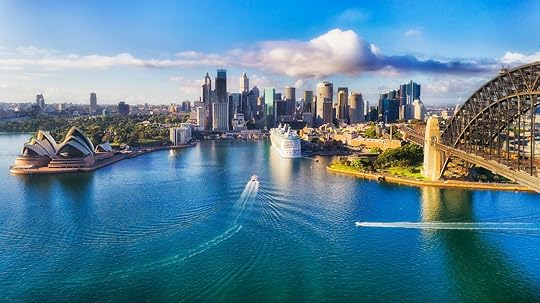
It’s been a full year since travel as we knew it was put on indefinite hold. The pandemic has caused airlines to suffer unprecedented losses, but in an effort to jumpstart domestic travel, the Australian carrier Qantas is launching “mystery flights.”
Here’s how it works: Passengers book their flights but they won’t know the destination until they’re about to land. Tickets are priced at $577 for the one-day trip. The flights are limited to 120 people on board and will run from three major hubs — Brisbane, Melbourne, and Sydney. The only thing passengers will know for sure is that all flights will be on Australian territory as the nation’s borders remain closed to international travel.
“Our new mystery flight adventures will offer a private charter Qantas B737 flight to and from the surprise location and a tailored itinerary on the ground to ensure you get the most out of your day trip. We’re working behind the scenes to create some truly wonderful experiences both on the ground and in the air,” Qantas shared on its website.
Another idea that carriers have come up with is a flight that doesn’t actually go anywhere. In October of last year, Qantas launched its flight to nowhere, which sold out in minutes. The route featured a seven-hour round-trip journey from Sydney to the Australian Outback where passengers got to see the Sydney Harbor, the Great Barrier Reef, Uluru, Kata Tjuta, and Bondi Beach from above. Other airlines followed suit, including Eva Air with its speed-dating flight that ran from Taipei’s Taoyuan International Airport and circled around Taiwan.
Travelers have shown interest in the new trends that offer even the slightest resemblance to a traditional travel experience, providing a glimmer of hope for the airline industry as the pandemic continues to unfold. 
The post Qantas launches ‘mystery flights’ to jumpstart domestic travel appeared first on Matador Network.

The town of Húsavík, Iceland, is campaigning for an Oscar

If you’ve never been to Iceland but the town of Húsavík sounds familiar, it’s probably because you saw the movie Eurovision Song Contest: The Story of Fire Saga, starring Will Ferrell and Rachel McAdams. The small town of 2,300, which was featured in the film, has launched its own humoristic Oscars campaign with the goal of earning a Best Original Song Academy Award for the song “Húsavík (My Hometown).” The song, sung by Rachel McAdams in the movie (McAdams’ voice was mixed with Swedish singer’s Molly Sandén), is an homage to the small fishing village and has come to hold great significance for the real-life townspeople.
On the official campaign website, the people of Húsavík penned a letter explaining why their song deserves to win.
The letter reads, “It would be a huge pride for the town of Húsavík to be part, through a song which bears its name, launched by a film which glorifies the power of music, of the biggest event celebrating the history and the value of filmmaking, and hence of modern storytelling.”
And it sounds like they actually have a shot. David Ehrlich, in his breakdown of the top Best Original Song contenders, wrote for Indiewire, “In a strange field shaped by throwbacks and throwaways, one absolute banger so obviously stands out from the pack.” He goes on to describe the song as a “climactic hyper-ballad that has to establish the lead characters’ feelings for each other, celebrate the sleepy fishing village they may not have outgrown, honor the the story’s general silliness, and hit you in the gut hard enough that you believe it might actually be worthy of winning Eurovision. ‘Húsavík (My Hometown)’ does all that and more.”
The people of Húsavík aren’t happy with a mere nomination, though. For them, it’s victory or nothing. You can tune into the Oscars on April 25 to see if this small fishing village’s dreams come true. 
The post The town of Húsavík, Iceland, is campaigning for an Oscar appeared first on Matador Network.

6 incredible German cycling routes
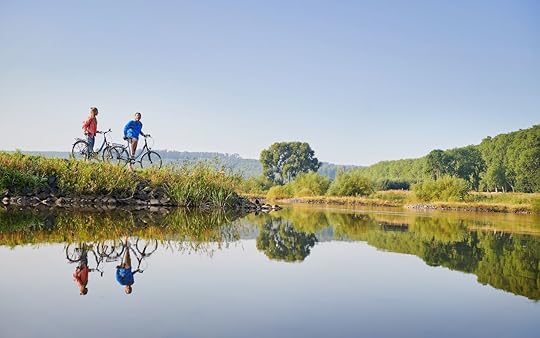
There are more than 250 designated cycling routes in Germany, which leaves one thing certain: Germans love their bikes. Radwanderwege is the German term for these trails, and a rad wander they are, indeed.
But instead of pouring over hundreds of maps to see if one might work for you, let this list be your starting point. Spanning the entire country, from UNESCO World Heritage Sites to rolling vineyards, here are six of the best cycling routes across Germany.
1. Berlin Wall Trail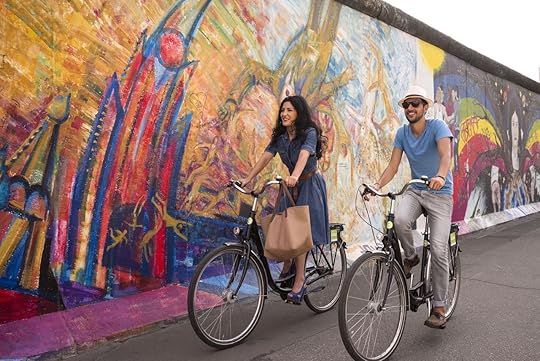
Photo: Philip Koschel/visitBerlin
The Berlin Wall — and all it stood for — infamously divided the German capital for nearly three decades. While its few remaining sections serve as poignant historic monuments, the entire 100-mile route has been transformed into a dedicated hiking and cycling trail. The Mauerweg, or Berlin Wall Trail, successfully combines nature, culture, and history like nowhere else.
While some of the route zigzags through the city, taking in major sights like the Brandenburg Gate, Checkpoint Charlie, and Potsdamer Platz, much of it runs through the outskirts, taking visitors through forests, scenic countryside, and leafy, lake-filled areas like Wannsee. Along the way are watchtowers and memorials, as well as palaces, historic churches, landmark housing estates, and more. Plentiful public transit stops mean you can easily break the route into smaller sections — and break for your own rest days and getaways.
2. Danube Cycle Path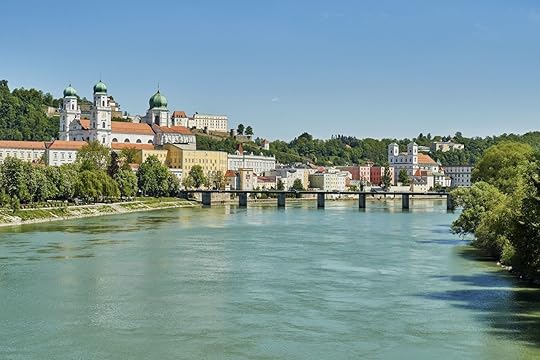
Photo: Florian Trykowski/www.bayern.by
The German section of the Danube Cycle Path — which itself forms part of the longer EuroVelo 6 — starts in Donaueschingen, in the southern state of Baden-Württemberg, and follows this famous river all the way to Passau in Lower Bavaria.
The 380-mile route passes through some famously glorious countryside. Cyclists will get to experience the natural lakes and wetlands of Donauried, taste local culinary specialties — Weissbier and Weisswurst in Bavaria, Maultaschen (Swabian noodles filled with smoked meat, spinach, and onion) in Baden-Württemberg — and take in historic towns like Ingolstadt and the UNESCO-recognized Regensburg.
Be sure to make time for exploring Passau, regarded by many as the “Venice of the North.” It has a beautifully baroque old town, along with the remarkable St. Stephen’s Cathedral and the 13th-century Veste Oberhaus.
3. Elbe Cycle Route
Photo: Francesco Carovillano/GNTB
The River Elbe flows northwards through Germany before emptying into the North Sea. The Elbe Cycle Route, some 790 miles in total, takes in several states — Saxony-Anhalt, Brandenburg, Lower Saxony, Hamburg, Mecklenburg-Western Pomerania, Schleswig-Holstein, Saxony — and major German cities. You’ll pedal through Dresden, Hamburg, Magdeburg, and Lutherstadt Wittenberg, where Martin Luther posted his Ninety-five Theses on the door of All Saints’ Church in 1517.
There are endless urban highlights to this route, but the natural landscapes will stop you in your tracks. Worth a specific mention are the peaks of the mountainous Saxon Switzerland National Park, the sweeping landscapes of the Elbe Floodplain UNESCO Biosphere Reserve, and the scenic mudflats of the Wadden Sea, a UNESCO World Heritage Site since 2009.
4. Mecklenburg Lakes Cycle Route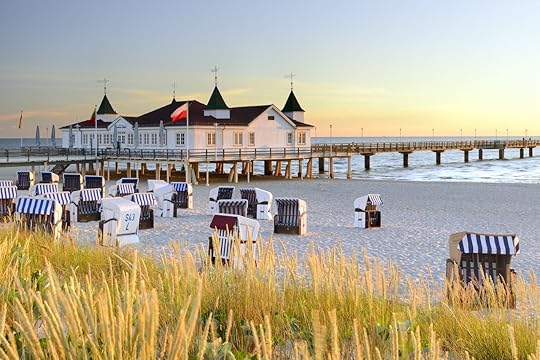
Photo: Francesco Carovillano/GNTB
This scenic cylcing route is characterized by, as the name suggests, lakes — thousands of them. It charts a 400-mile course through the Mecklenburg Lake District and travels all the way north to the Baltic coast.
Starting in Lüneburg, famous for its handsome, red-brick Gothic buildings, you’ll pedal through the Elbe Valley Nature Park, with its dunes, heaths, and forested areas, and then on to Müritz National Park, which itself contains over a hundred lakes — including the eponymous Lake Müritz, the largest in the area and a spectacular highlight. You’ll likely encounter a diverse array of birdlife, too, such as cranes, ospreys, and white-tailed eagles.
The route also takes in the vast and impressive Szczecin Lagoon before ending on the pretty island of Usedom, where beaches, seaside spa architecture, and a coastal atmosphere provide a superb reward for all that hard work.
5. Rhine Cycle Route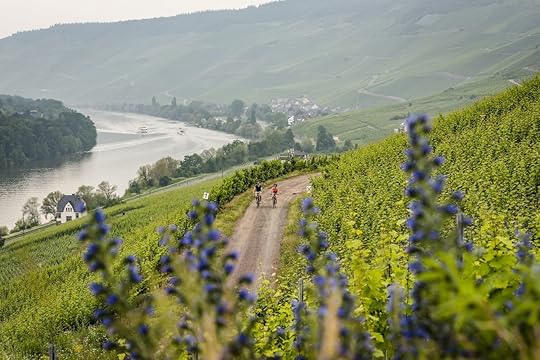
Photo: Günter Standl/GNTB
Forming a natural border between France and Germany, the Rhine is a world-class river, as well as one of Europe’s longest, connecting the Swiss Alps to the North Sea.
Germany’s Rhine Cycle Route travels 766 miles from the sparkling Lake Constance in Bavaria and passes through the historic cities of Karlsruhe and Mannheim in Baden-Württemberg, the cathedral city of Speyer, and the wine region around Mainz in the Rhineland-Palatinate. If you’re only going to do one section, though, make it the Middle Rhine Valley between Bingen and Koblenz, which features sloping vineyards, majestic castles (around 60 of them), and striking medieval towns.
Adventurous souls can continue through Bonn, Cologne, Düsseldorf, and the post-industrial Ruhr district, before the Rhine passes over into the Netherlands.
6. Saarland Cycle Route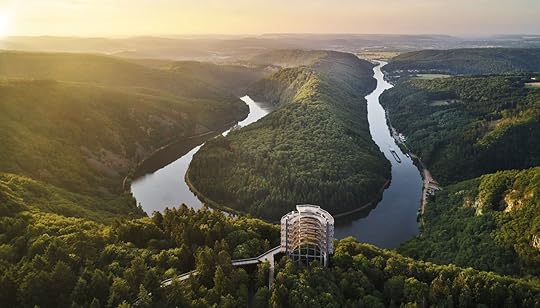
Photo: Jens Wegener/GNTB
At just 70 miles long, the Saarland Cycle Route is one of Germany’s shortest official bike trails, but it packs in a slew of natural and cultural thrills through dense woodlands, below unusual rock formations, and alongside sun-drenched vineyards. There are can’t-miss sights like the UNESCO World Heritage Völklingen Ironworks, which offers compelling insight into 20th-century steel manufacturing; opportunities to learn about — and purchase — porcelain in Mettlach; and plenty of chances to sample local wines at Serrig, the “Saar Wine Gateway.”
The last 18 miles of the trail follow the River Saar through the Rhineland-Palatinate, where it meets the mighty Moselle and flows into the charming town of Saarburg, with its quaint old town, castle ruins, and picturesque waterfall. For a speedy jaunt through some of Germany’s best looks into porcelain, wine, and history, there’s nowhere better. 
The post 6 of the best cycling routes in Germany appeared first on Matador Network.

March 2, 2021
How to visit Boundary Waters
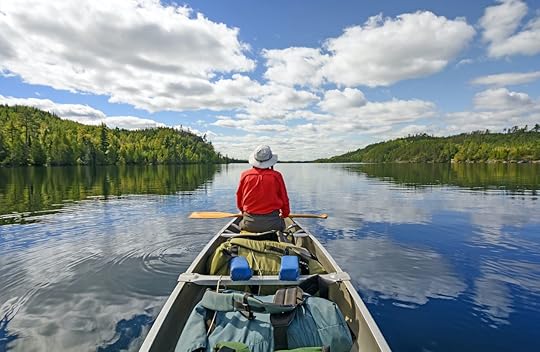
That the Minnesota Boundary Waters Canoe Area Wilderness (BWCAW) is one of the most spectacular locations in a continent filled with them is not the question. Sharing a 150-mile border with Canada in northern Minnesota, it spans more than a million acres filled with 1,100 lakes and 1,200 miles of canoe and kayak routes. Its abundant wildlife, from moose to dam-building beavers, can be seen in its pristine forests and clear lakes, which themselves teem with fish, while multiple bird species fly overhead.
So, no, the question isn’t whether to add the BWCAW to your bucket list. The question, rather, is how to tackle this immense, and immensely beautiful, place. The good news is that, despite its remote location, Boundary Waters can be enjoyed by even first-time paddlers.
What is Boundary Waters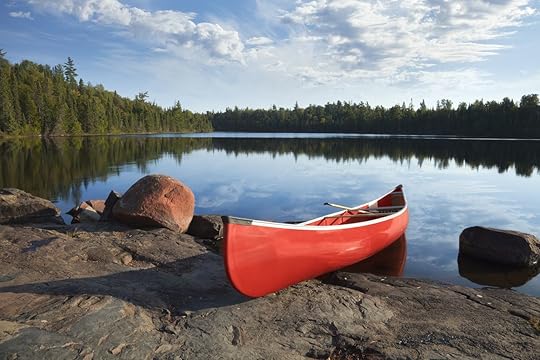
Photo: Dan Thornberg/Shutterstock
Part of the Superior National Forest and managed by the National Forest Service, the BWCAW — or B-dub, as locals call it — area contains vast forests of pine, fir, and spruce trees, untouched by development. It’s been shaped over millennia by glaciers that have carved up its landscapes, leaving over a thousand lakes that cover one-fifth of the area.
The BWCAW has been an officially protected wilderness area since 1978 and teems with wildlife, including moose, deer, black bears, bobcats, foxes, otters, and beavers, among them. It is also home to the largest population of Eastern timber wolves in the Lower 48. Pike, perch, walleye, trout, and smallmouth bass are among the fish that draw anglers here.
Tips for first-timers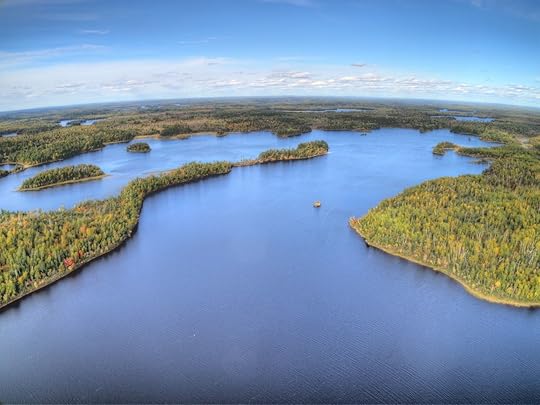
Photo: Jacob Boomsma/Shutterstock
There are more than 70 entry points into the area and over 2,000 camping spots. It’s essential to get permits ahead of time online, as you’ll need to go in through the entry point for which you got a permit. If you are planning to do any fishing, you’ll need a license for that too, which you can get online through Minnesota’s Department of Natural Resources.
Our top tip for anyone new to canoeing and kayaking is to camp in one spot and take day trips from there. That will save you the effort of having to break-down, pack up, and remake camp every day, and will mean that you can paddle without a packed, heavy craft. You also won’t need to portage — that is, take out your canoe and carry it across land between lakes — a heavy canoe quite so often. In fact, first-timers are encouraged to think about a camping spot that involves only two or three portages to get to.
Also, if you are going to need to paddle for a while to get to your base camp, or simply the camp where you’ll spend your first night, you’ll want to leave early in the morning — so consider an entry point that’s close to a hotel. No matter what, make sure you know the basics of reading water conditions and discuss details with the folks you’ll be renting your gear from.
Where to start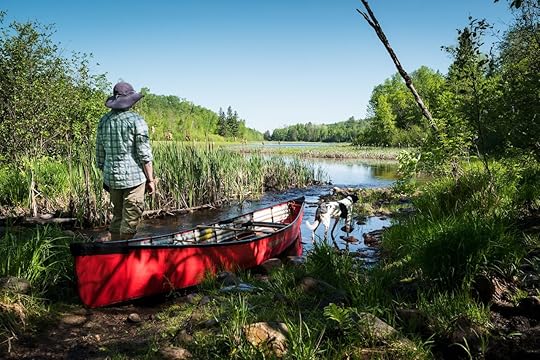
Photo: Travis J. Camp/Shutterstock
The main towns near the B-dub are Ely, Grand Marais, and Tofte. You can rent canoes and kayaks in these towns and, in many cases, they can offer you a complete set-up or, if you’re more experienced and already have the gear, something more basic. Depending on who you rent from, they may be able to help you secure a wilderness permit. And, by all means, take the time to talk to them to get their take on the best routes and places to camp.
The town of Ely has the most options in terms of canoe and kayak rentals, so you can go ahead and research pricing there. Most outfitters will also shuttle you to your entry point. Another option is Grand Marais, on the shore of Lake Superior, and also along the Gunflint Trail entrance into the area. You’ll also find rentals in Tofte, also on Lake Superior south of Grand Marais, but you may not find ones with the option to fully equip your canoe or kayak.
Choosing a route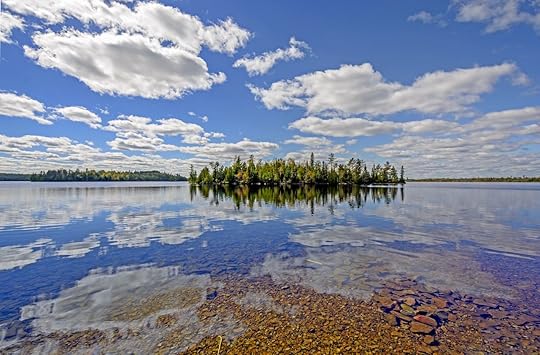
Photo: Wildnerdpix/Shutterstock
If you’re planning to base yourselves in one spot and take day trips, good lakes include South Temperance Lake, Mahlberg Lake, or Seagull Lake. Check before you go to make sure the area you want to explore hasn’t had a fire in recent years, as it takes a while for the forest to regrow. Likewise, if having a campfire is important to you, make sure the area you want to explore doesn’t have a fire ban.
If you’ll be moving from campsite to campsite, plan on being able to paddle an average of three miles per day. Also, note that portages are calculated in rods, with each rod measuring 16.5 feet. With that, factor in daylight hours, the time it will take you to break down camp and set up camp, and any time you may want to relax or hike. If you’ll have to portage as well, then six to eight miles is reasonable in a day, while the itineraries of more experienced paddlers may have them paddling ten miles a day.
If a route runs east-west, consider starting on the western end — since you may enjoy the wind at your back that way. Cross Bay Lake to Long Island Lake is a good starter itinerary that you can take from three to five days to complete. There’s good fishing in the area, as well as islands to camp on, which is always a highlight. Alternatively, the 5-7 day Clearwater Route is a good option and those staying at the Clearwater Historic Lodge on either end of their journey may want to opt for this route, which showcases the best of the area, taking you alongside tall cliffs and offering multiple vistas into Canada.
There are literally hundreds of options, and the Friends of the Boundary Waters, a nonprofit set up to protect the area and keep the waters clean, offers plenty of route ideas. They have these listed by the number of days you want to spend, and they also have favored routes suggested by members who’ve plied these waters.
What else to do at Boundary Waters
Photo: David Brickner/Shutterstock
If your idea of a good time is not spending it setting up camp, you can always enter the Boundary Waters for a day trip. Whether staying at the Clearwater Historic Lodge, the Gunflint Lodge, or other nearby accommodations, it’s possible to do a canoe day trip and still take in the quiet serenity of being out on the water, and seeing the wildlife on the shore.
Or maybe you are okay with camping, but you don’t want to paddle for several hours each day. Well, the good news is that there is spectacular hiking by Boundary Waters. You can do easy two-milers around lakes or overnight treks as well. For bird watchers, the B-dub is heaven, as over 200 bird species have been spotted here. Look out for Canada geese, mallard ducks, multiple types of woodpeckers, loons, herring gulls, red-tailed hawks, chickadees, warblers, robins, jays, bald eagles, and many more feathered fliers.
Best time to go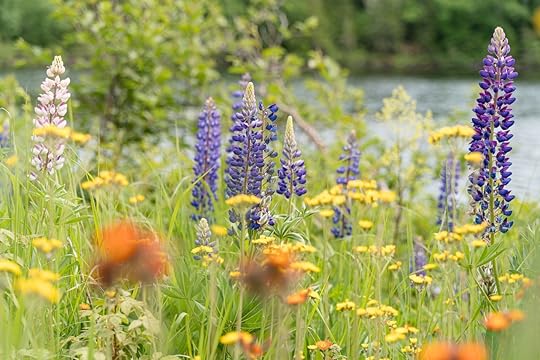
Photo: David Brickner/Shutterstock
The canoeing season runs from May to September, and the best fishing is during those bookend months. Wildflower viewing and berry-picking, on the other hand, are best enjoyed in June and July. If mosquitos are a concern, go in August or September. You’ll find the warmest days in June through August, with temperatures reaching the mid-70s. If you want to avoid crowds, September is a great month to go, but come prepared as overnight temperatures can linger below 50 degrees. Just know that in August in September, water levels can be lower, making some routes more challenging. No matter when you go, bring rain jackets, as precipitation is possible any time. The BWCAW gets an average of 8-11 days of rain per month throughout the summer.
Winter at Boundary Waters
Photo: Jacob Boomsma/Shutterstock
While most people visit boundary waters in the warmer months, the area can be especially magical, and quiet, in the long days of winter. Minnesota is one of the best places in the Lower 48 to spot the northern lights, and the BWCAW is officially an International Dark Sky destination. Just check the aurora forecast and park yourself on the southern shore of a lake for the best northward view of the aurora .
In winter, you can also explore the frozen lakes of Boundary Waters on cross-country skis, snowshoes, or on dog sleds. You could spend a couple of days at the Wintergreen Dogsled Lodge, but you don’t need to be a guest to take day trips from the lodge. They offer tours where you guide your own sled over the frozen waters of the B-dub, an area that’s simply magical any time of year.
The post How to visit Boundary Waters, the most jaw-dropping paddling destination in the US appeared first on Matador Network.

Traveling solo in Dallas

Most of my adult life, I dreamed about taking a solo vacation. I remember thinking that my first solo trip would be to a foreign country — I’d pack up my bare essentials, zip over to Europe (while sipping fancy cocktails on my flight, of course), and have myself an “Eat, Pray, Love” type of adventure. But I never imagined a breakup being the catalyst to my first solo trip.
Mere days into 2021, I ended a romantic relationship with the person I lived with and found myself diving headfirst into the courageous mindset that encouraged my first solo trip. Prior to the end of my relationship, I’d always feared traveling solo. In fact, whenever I indulged in dreamy conversations about jumping on a flight to go somewhere warm, it always involved a companion — whether it be my partner, a friend, or even my mom. It wasn’t necessarily that my relationship was holding me back from traveling solo, but when you’re in a relationship so much in life that could just be “me” easily becomes “we,” especially travel. When I found myself single, I also discovered a desire to push the boundaries of my comfort zone. I had convinced myself that traveling alone would be scary or uneventful if I had no one to enjoy it with, but I wanted to prove myself wrong.
So, I packed my bare essentials into a carry-on duffel, swallowed the fear that sat in the back of my throat, and zipped on down to Dallas, Texas. I picked Dallas because I’d heard good things from travelers who posted chronicles of their adventures to YouTube. From the comfort of my living room, I watched them discuss great food, friendly people, and the city as a growing hub for entrepreneurial women.
Ultimately, my trip to Dallas was a success. On the first day, I felt a little bit like everyone in the city could tell that I was there alone and unfamiliar with my new surroundings, but by the last day of my trip I felt much more like I belonged. Not only did I tour apartments in Uptown and Addison, so I could get a feel of what it would be like to live there, but I grabbed dinner at a restaurant in Bishop Arts with an online-turned-IRL friend. I even ventured out of my Starbucks coffee routine to discover a local coffee shop, where I sipped an upside-down latte flavored with lavender.
A canceled flight (due to a snowstorm in New Jersey) extended my trip by about two days. Initially, I was stressed having to deal with the airline, rescheduling my flight, and wondering where I was going to stay for the next few days, but within hours I found myself excited. Here I was, in a new city, blessed with additional time to explore and try new things. I was given lemons and proved to myself that I could make some really awesome lemonade. Not only would I have more time to tour apartments, try local restaurants, and visit other neighborhoods, but I would have more time to properly immerse myself in the city. It also gave me more time to reflect on some of the things I learned about myself during my time in Dallas.
I learned that I’m much more self-sufficient than I thought.Don’t get me wrong, I always knew I was independent, but a solo trip pushes you to truly face any fears that come up about relying on yourself in a new place. I had to rely on myself to navigate the Dallas freeways, find where I needed to go, and get there safely. Driving in a busy city made me feel like a native by the end of my trip.
Had I not pushed past the fear of exploring alone, I would have never had these special experiences, large and small. I would never have discovered my new favorite coffee shop in Dallas or learned about the beautiful history and culture that the Bishop Arts District has to offer.
I learned that traveling alone brings up a lot of emotions that don’t have to do with travel.If you travel to a place where you don’t know anyone, then you’re bound to have some alone time when you’re reflecting on life decisions you made before your trip. Traveling alone puts you in a space where you simply feel more vulnerable, and as a result, you’re able to ask yourself the hard questions that maybe you always avoided at home. It brings about such deep reflection and introspection that it can be almost overwhelming at first, but there’s something so powerful about diving deeper within yourself to learn more about your own motivations and emotions.
If you experience a moment of introspection during a solo trip, lean into that and honor it. During the evenings on my trip, I often had a lot of downtime when I would reflect on my day. Often, those quiet moments also led to a lot of random reflection on my life as a whole. I thought about my recent breakup and the major life changes that came with that, about how this trip was shaping me, and about what things I wanted to change in my life. Solo travel has the potential to do that for you — give you the opportunities to discover new things about yourself.
I learned that traveling opens you up not just to new places but also new mindset.I went to Dallas thinking that maybe if I liked it enough, I could move there one day. I figured if I could tap into what it was like to live and breathe in the city, then maybe I could see myself there in the future.
Being alone in a new city and exploring on my own time allowed me to see how much I could truly thrive there. I got a preview of life in Dallas, but I also discovered that amazing things can arise once you let go of all expectations of who you should be and what your life should look like.
If you’ve traveled outside your hometown even once before, you know that it changes your perspective of the world. The world seems much bigger after — and your problems much smaller. But traveling also allows you to see the different paths your life can take, and if you’re open to it, you can explore one of those paths when you’re ready.
My first solo trip was unexpected and unplanned but also more wonderful than I ever could’ve imagined. I left Dallas with so much more clarity and a deeper understanding of the woman I’ve become in the past year. I was always the type of person who thought it’d be better to try new things with someone by your side, but this trip taught me that sometimes trying new things alone allows you to experience them in a much more beautiful way. Being in an unfamiliar place and having to get comfortable with being uncomfortable showed me just how quickly I can learn and how adaptable I can be. It made me realize that if I truly want to do something, try something, or go somewhere, I can do so by myself — I don’t need to wait for anyone to tag along or give me permission.
A week after my trip, I packed my bags for the second time in a month. This time to move to Dallas and embark on a new journey solo. 
The post After a breakup, I finally took the solo trip that changed my life appeared first on Matador Network.

New Orient Express routes
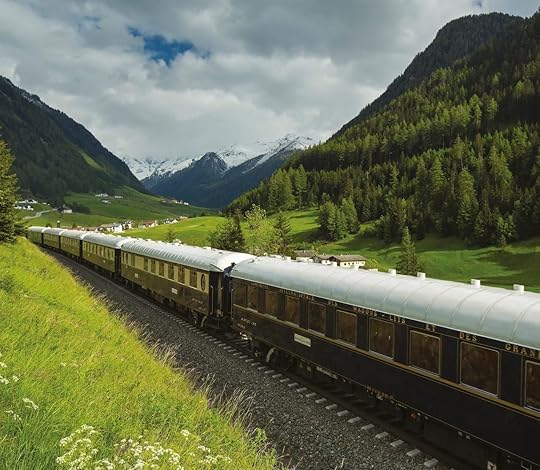
An ideal train ride through Europe looks something like Murder on the Orient Express — but without the murder. Now you can get exactly that to more destinations than ever with the unveiling of new Orient Express boarding points this year. The luxurious and fully restored 1920s Venice Simplon-Orient-Express will be adding five new boarding points throughout Europe, making an Orient Express journey more accessible than ever before.

Photo: Venice Simplon-Orient-Express/Facebook
The train will add Rome, Florence, Geneva, Brussels, and Amsterdam to its routes. The route to and from Venice and Amsterdam will connect Paris, Brussels, and Amsterdam, while other routes, like Rome to Paris, are a return to routes offered in the past. Travelers will also be able to take advantage of new experiences, like staying overnight at the Villa San Michele in Florence or Castello di Casole in Tuscany, as part of their journey.
Gary Franklin, the vice president of Trains & Cruises, told Lonely Planet, “During 2020, while the train was unable to operate, we identified some exciting new destinations and routes, offering an increased number of ways to see Europe whether for a long weekend or as part of an extended European tour and reflecting the storied history of the Venice Simplon-Orient-Express.”

Photo: Venice Simplon-Orient-Express/Facebook
The train also has three new suites named after cities on the route — Vienna, Prague, and Budapest — each with a design inspired by that city’s unique features.
The Orient Express runs throughout Europe from March to November and goes to Istanbul once a year. To book a trip, and to stay up-to-date on the latest COVID-19 procedures, visit the train’s website. 
The post These new Orient Express train routes are the ideal way to see Europe appeared first on Matador Network.

Best things to do in Spiti Valley
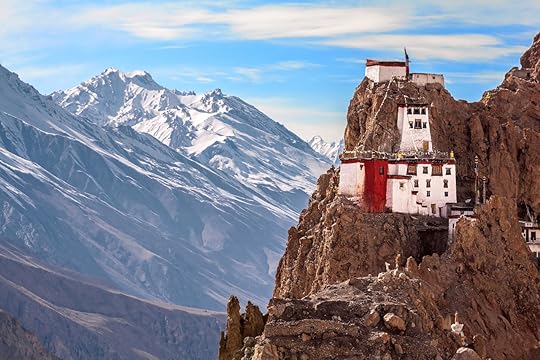
In northwestern India, the high-altitude desert-scape of Himachal Pradesh state is home to a region that looks and feels far more like Tibet than it does a piece of the subcontinent. Spiti Valley sits at altitudes of over 10,000 feet. Here, the browned, spired peaks and extensive valleys reminiscent of South American pampas make reaching this somewhat hidden hamlet just as much of an adventure as traveling through it. Quite literally the “Middle Land” in between India and Tibet, Spitians are primarily Buddhist and historical records show they have been living in the area since the 10th century. Today, the district is a treasure trove of monasteries, mountains, and the tranquility that the Himalayas are known for. Here’s exactly what you need to know about the magic that is Spiti and how you too can experience its geographically unique beauty.
How to reach Spiti Valley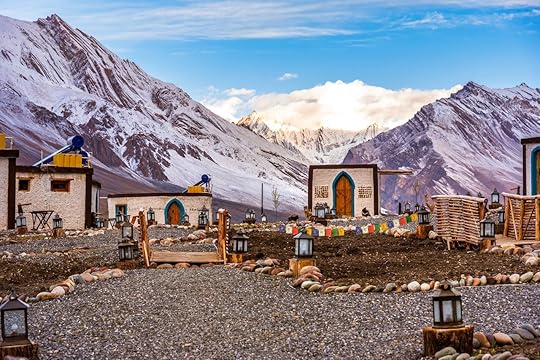
Photo: Amit kg/Shutterstock
The only way to Spiti — which literally translates to “Middle Land” — is on wheels. There are no airports anywhere near its villages, and the roads that lead in and out are composed of rock and dirt that’s been hastily carved from the cliffside. There are many times when it’s no over-exaggeration to say you’d be better off walking – a road trip to Spiti is certainly not for the faint of heart. Many find it worth the effort, however. Spiti’s rugged terrain and open skies devoid of any light pollution are an adventure lover’s paradise.
It’s because of this that Spiti receives far fewer domestic visitors compared to Himachal Pradesh’s other locations, even despite its natural beauty, and foreign tourists are even rarer. Yet a visit to this extraplanetary-looking valley is well worth the arduous journey. While other mountainous Indian locales such as Ladakh are connected by well-paved roads, Spiti is absolutely not. There are two ways to reach the valley and both ply through some treacherous – albeit epic – terrain.
Both routes are not created equal, though, with one being far safer than the other. While you might think this has to do with road conditions, it all comes down to altitude. The riskier “Manali Route” involves first reaching the only somewhat-trendy town in the area, Manali, before finally continuing to Kaza, Spiti’s capital and largest village. Though scenic, this course involves going over not just one but two high-altitude passes. So aside from being blocked by snow until sometimes as late as June, this way of travel puts you at significant risk for AMS (Acute Mountain Sickness) which can be dangerous, if not deadly.
Luckily, the alternative is much safer and it allows you to break up your journey, something you’ll definitely want to do once you get a taste of Indian roads. On this route, travelers will first need to make it to Reckong Peo, a quiet crossroads where you’ll finally be able to see some snowcapped peaks up close.
You can easily find a ride via bus to Reckong Peo from either Chandigarh, Shimla, or Rampur, all three of which can be reached from New Delhi’s ISBT (Inter-State Bus Terminal). If you’re in a rush, it’s also possible to catch a bus from New Delhi straight to Reckong Peo, but be forewarned that the ride will be extremely long and painful.
Reaching Rampur first is your best bet, as the town has comfortable and cheap hotels and delicious street food. A ride from Rampur’s local bus station to Reckong Peo takes 6-8 hours and costs around 200 rupees, or $2.76. Certainly not as bad as a 24+ hour expedition from the capital.
Once you’ve received your Inner Line Permit in Reckong Peo (necessary for foreigners traveling into Spiti), you can hop on a bus to Nako, which is the first major destination within Spiti. Buses to Nako from Reckong Peo tend to be the least squished (a common occurrence in this remote region), take about 5 hours, and cost 175 Indian rupees per person, or $2.42.
What is an Inner Line Permit?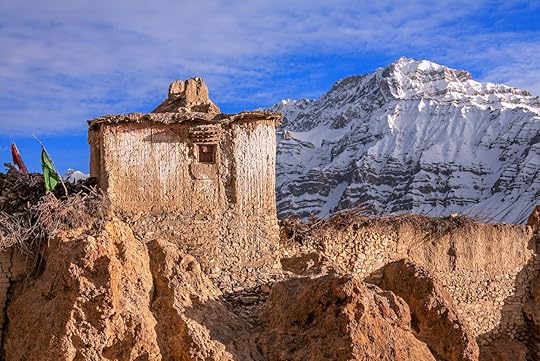
Photo: Kiwisoul/Shutterstock
Due to its proximity to China, all foreigners looking to explore Spiti Valley must get an Inner Line Permit, also known as a Protected Area Permit. The easiest place to get one is at Reckong Peo’s District Magistrate’s office, which is located on Khwangi Road within walking distance from all local hotels.
Though the permit is officially free, it’s not possible to acquire it without being sponsored by a tour company and said companies do, in fact, charge a fee. On the bright side, the tour company offices are conveniently located right next to the DM building and they usually provide you with the official letter in an hour or less. Expect to pay between 200-400 rupees ($2.76-5.52) for this service.
After you have your letter, you can head over to the DM’s office where they’ll take your photo on a webcam and hand you your permit, which will be valid for 14 days. If you’d like to stay longer than 14 days, you’ll need to get another permit, which you can do in Kaza.
Things to do in Spiti Valley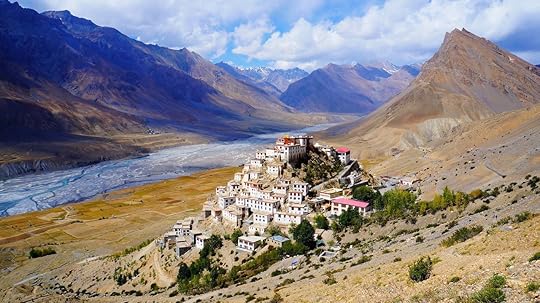
Photo: otorongo/Shutterstock
Once you arrive in Nako, your Spiti Valley adventure will officially begin. Spiti is filled with numerous villages, and each has something slightly different to offer. Nako is an idyllic place to start as it features a small lake along with an 11th-century monastery that overlooks the vast peaks that surround it.
After spending a day or two enjoying the peace and quiet of Nako, catch a bus or hitch a ride to Tabo, which is the oldest continuously operating Buddhist enclave not just in India, but in the entire Himalayan region.
The Tabo Monastery is a historical highlight of the small village, as it was founded in 996 CE. Though no photography is allowed inside, you won’t soon forget the dozens of frescoes and murals that grace the monastery’s inner walls.
Before you leave the village, you must try phakse, a local dish that resembles a plate of gnocchi topped with tomatoes. Other popular Spitian eats include thukpa (a noodle-based soup) and butter tea, which is made from yak butter, water, salt and is most definitely an acquired (but interesting) taste.
For active adventurers, Dhankar Village offers one of the most rewarding treks in the valley. The trail to Dhankar Lake, which sits above 14,000 feet, isn’t long, but the altitude will make the route feel difficult for even the most athletic of travelers. Don’t be surprised if you find yourself gasping for air after a few feet — this a trail that demands slow, steady progress. But with great struggle comes great reward. Those that tough it out will be greeted by a stunning lake that’s often surrounded by fluffy, grazing yaks.
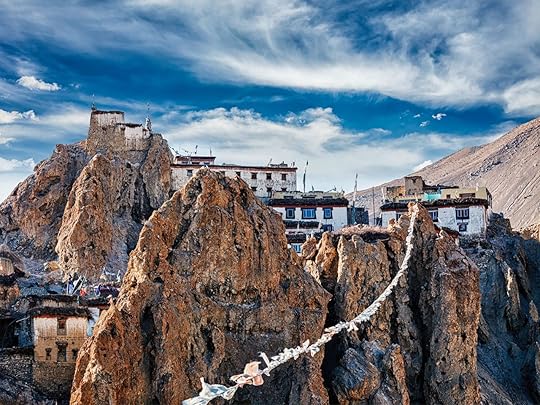
Photo: Dmitry Rukhlenko/Shutterstock
If you really want to feel like you’re on another planet, visit Mud Village. Perhaps the most remote place in the entire valley, Mud is the last inhabited village in Pin Valley (an offshoot of Spiti) and contains some of the region’s most mesmerizing views. Trekking enthusiasts will be pleased to know that it’s also possible to head out on some stunning day treks along local trails. Mud can be reached either by a daily afternoon bus from Kaza or if you’re feeling adventurous, via hitchhiking. The Tara House Homestay is most popular with travelers, but if it’s full as is common during high-season, numerous other homestays can be found throughout the village.
A journey further into Spiti provides the opportunity to see its most iconic sites as well as visit some truly offbeat locales. Key, which might be the most well-known landmark in all of Spiti, is the largest monastery in the valley and sits perched on a hill. Make sure you take some time to appreciate its ancient internal murals and grab yourself a panoramic glimpse of the valley from the monastery’s highest point.
One of the best things about Spiti is that it’s very easy to leave the so-called “tourist trail” as many visitors simply do not venture off the main road. After you’ve made it to Kaza, an array of options will open up thanks to frequent local buses and a plethora of taxi drivers.
You can take a trip to Komik, which at just over 15,000 feet, is the world’s highest motorable settlement. Stay the night in a homestay, and make sure to bring your camera as Komik’s night sky is an astrophotographer’s dream. Meanwhile, the nearby Langza Village features a 1,000-year-old colorful Buddha statue and Hikkim (also in the vicinity) is home to the planet’s highest-altitude post office. All three can be reached on foot, which is the absolute best way to really get a feel for the area.
And for those who want to get seriously remote, trekking from Demul Village to Lhalung Village will allow you to do just that. A local bus leaves for Demul from Kaza at 5:00 PM each day, and it should take you no more than 2 hours to reach the remote and infrequently visited settlement. Aside from making the several-hour trek to Lhalung, you’ll also be able to enjoy truly authentic homestays, as Demul’s homestay system is one of the most sustainable in all of Spiti.
From its otherworldly landscapes to its rich culture and unique cuisine, Spiti Valley gives travelers a chance to experience Tibet, sans the astronomical fees and restrictions. For those unafraid of a long journey to a truly remote land, the enchantment of Spiti awaits. 
The post How to explore Spiti Valley, India’s high-altitude desertscape appeared first on Matador Network.

Tourist won $300K at a Vegas airport

Going to Las Vegas and not gambling is a feat of ultimate self-control. Even if you want to steer clear of casinos, you’ll be hit with gambling opportunities at McCarran International Airport on your way into or out of the city — the Las Vegas airport is full of slot machines ready to satiate the urges of impatient gamblers. For one tourist leaving Sin City, the airport slots represented her last chance at a big haul, and she ended up winning $302,000 while waiting for her flight home.
Winner, winner, chicken dinner!
Megan H. of Flower Mound, Texas, won more than $302,000 yesterday playing the Wheel of Fortune slots in the B Concourse. Congratulations, Megan! #winning #luckylady pic.twitter.com/o1uyv84qgF
— McCarran Airport (@LASairport) February 26, 2021
The woman, from Flower Mound, Texas, was playing a Wheel of Fortune slot machine on February 25 while waiting for her Southwest Airlines flight in the B concourse when she hit the jackpot.
Due to COVID-19 restrictions, only 500 of the airport’s 1,400 slot machines are in operation at the moment, Travel and Leisure reports.
The win is not, however, the largest jackpot from one of the airport’s slot machines. In July, a visitor from California won $873,000 at one of the machines, and the all-time record is actually $3.96 million, explains USA Today.
So just because you came up empty at Caesar’s Palace or the Bellagio, don’t lose hope yet. Show up early to the airport, post up at a slot machine, and try your luck. 
The post Lucky tourist won $300K at a Las Vegas airport slot machine appeared first on Matador Network.

Museum of Failure virtual exhibition

Usually museums are a showcase of successes. Whether it’s paintings, sculptures, or scientific innovations, the glass displays and velvet ropes typically mark accomplishments — not complete failures. This exhibition is changing that. The “When Design Flops” exhibition, currently at the Cité du Design in Saint-Étienne, France, highlights impractical and unnecessary objects that didn’t quite pan out. The 40 objects come from Sweden’s Museum of Failure, which opened in 2017.

Photo: Cité du Design
Sylvie Sauvignet, the exhibition’s curator, told Euronews, “To speak about failure is a serious topic. To fail, to flop — we usually don’t like it and avoid talking about it. So we decided to approach this topic with a lot of humor. … We decided to de-dramatize failure.”

Photo: Cité du Design
Featured objects include the 1980s DeLorean car, Google Glasses, a bike road roller, a tragic-looking doll from 1965 called Little Miss No-Name. There are even such ill-fated inventions as open-toed rain boots, a twin Champagne glass, and a watering can with its spout twisted backward.
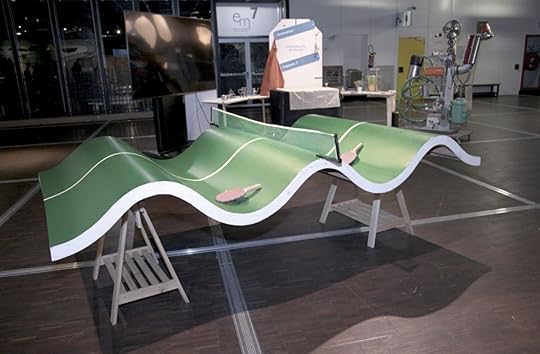
Photo: Cité du Design
The exhibition was originally scheduled to open in January at the Cité du Design’s physical gallery, but the pandemic has forced the show to go virtual. Guided tours of the show are now available through March 10, with tickets costing between $2 and $6. 
The post Take a virtual tour of the wacky objects from the Museum of Failure appeared first on Matador Network.

Matador Network's Blog
- Matador Network's profile
- 6 followers



